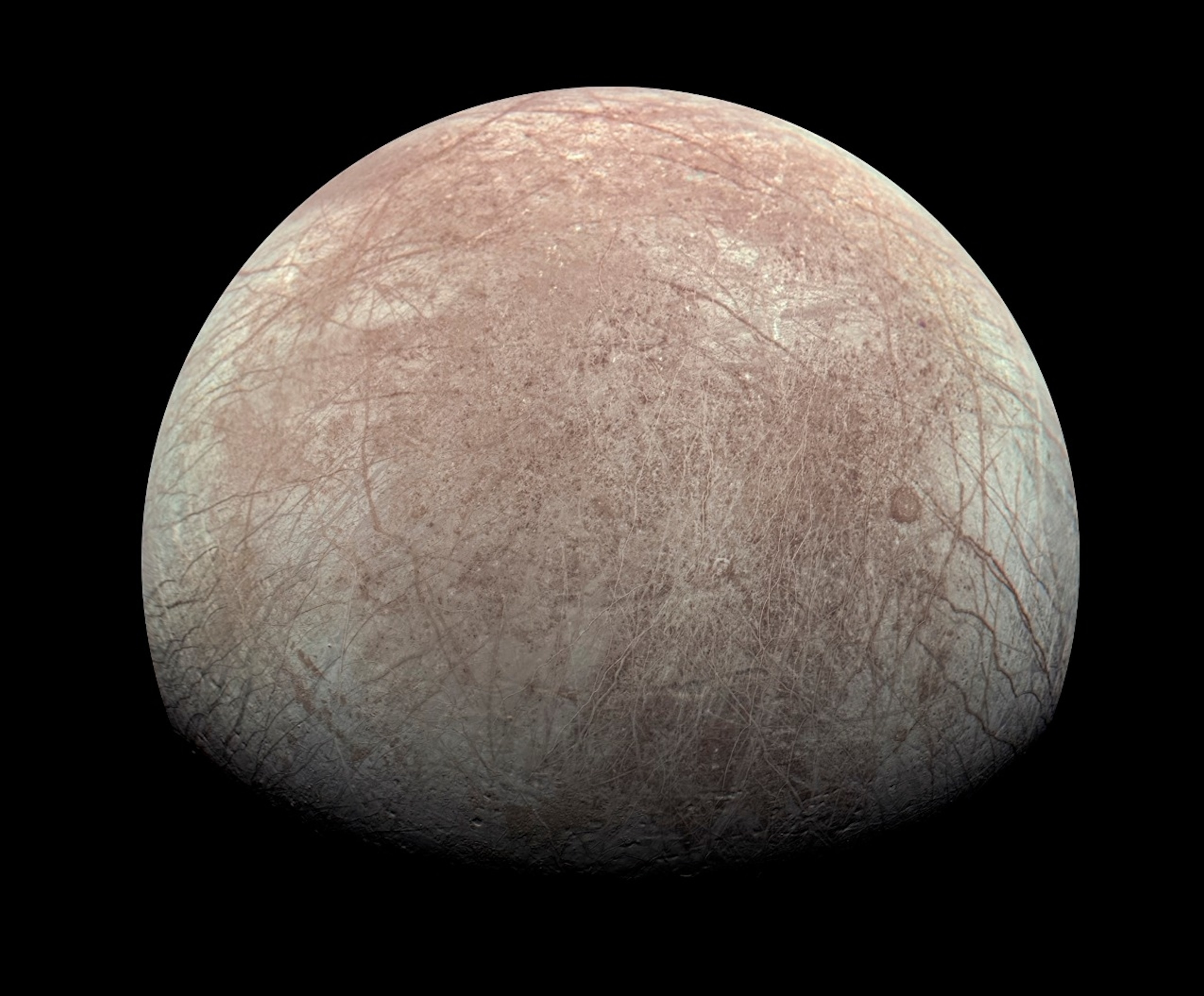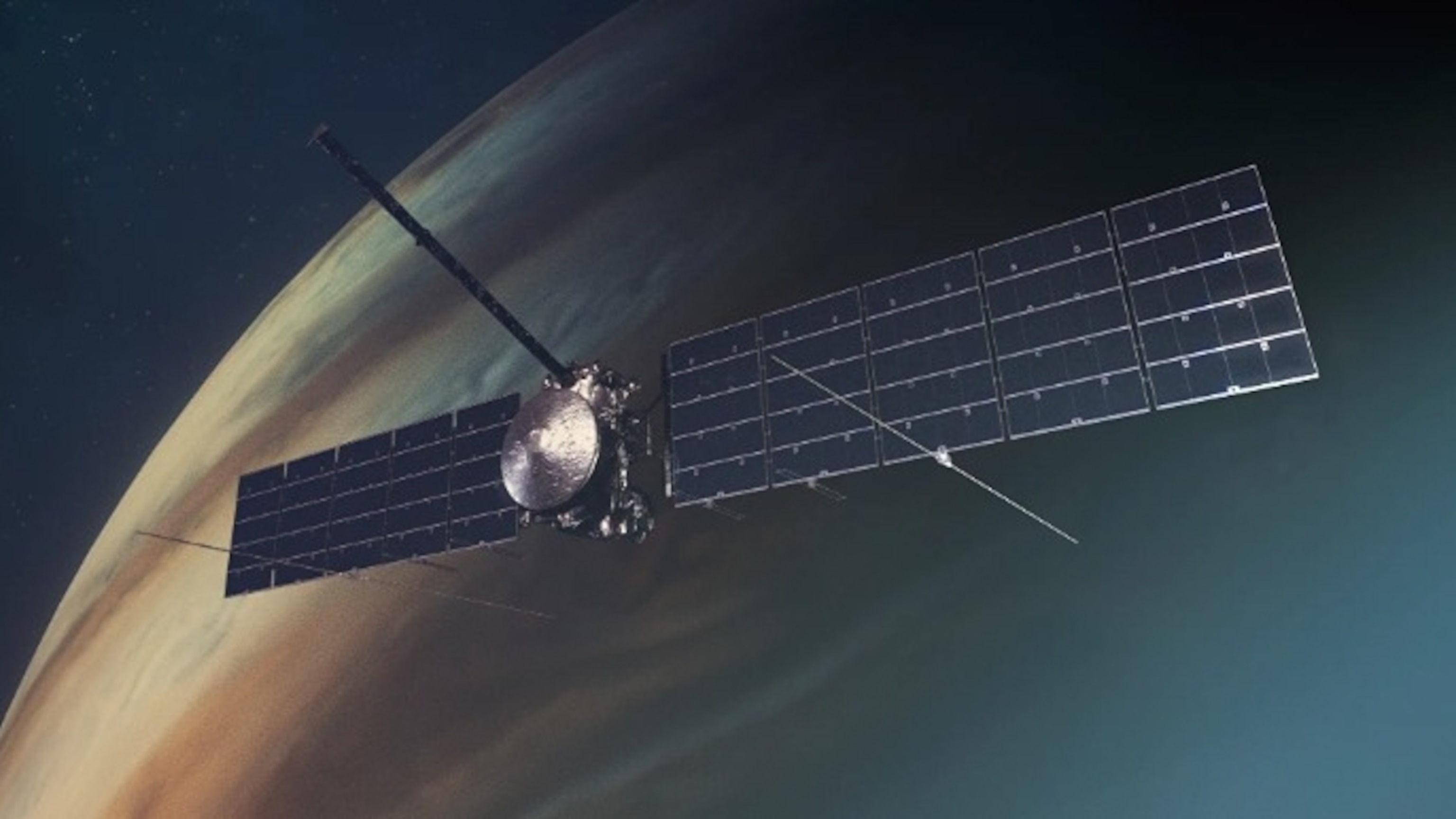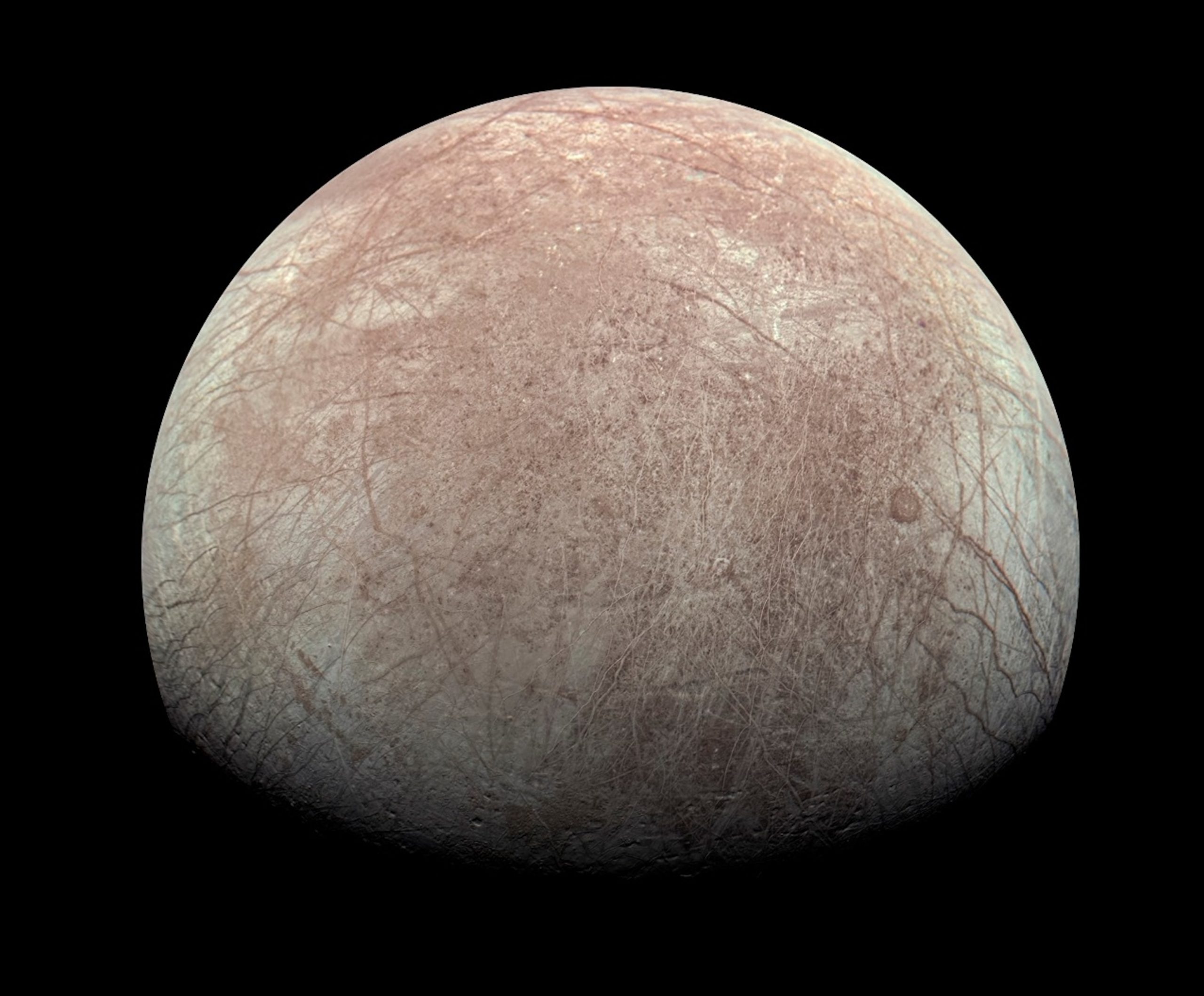Marking the latest foray into space exploration, NASA is preparing to launch its first mission to explore Jupiter’s moon, Europa, to determine if it harbors conditions suitable to support life.
NASA’s Europa Clipper is set to launch on Oct. 10 from NASA’s Kennedy Space Center in Florida and will be carried into orbit on SpaceX’s Falcon Heavy rocket, according to the agency.
The agency will invest approximately $5.2 billion in the entire life of the mission, which spans nearly two decades, beginning in 2015 and ending in 2034, according to a press release from NASA’s Jet Propulsion Laboratory.

This image provided by NASA shows Jupiter’s moon Europa captured by the Juno spacecraft, Sept. 29, 2022.
NASA/AP, FILE
Europa is the fourth largest of Jupiter’s 95 moons, and planetary scientists believe this unique moon harbors a salty ocean beneath its icy crust.
NASA says the mission aims to answer the question: Does the global, subsurface ocean contain the organic compounds and energy sources necessary to sustain life?
“As an ocean world, Europa is very intriguing,” Gina DiBraccio, director of NASA’s planetary science division, said during a press briefing this month.
“This mission is going to help us to understand a complex piece of our solar system,” DiBraccio added.
NASA’s 100-foot-long and approximately 58-foot-wide Clipper probe is the largest spacecraft the agency has built for a planetary mission and will travel 1.8 billion miles to Europa.
The sizeable spacecraft was built with large solar arrays to collect enough light for its power needs as it operates in the Jupiter system, according to the agency.
The journey to Europa is long, with the flight there spanning roughly five and a half years. NASA says the spacecraft will fire its engines to enter orbit around Jupiter in April 2030.

This artist’s concept depicts NASA’s Europa Clipper spacecraft in orbit around Jupiter. The mission is targeting an Oct. 10, 2024, launch.
NASA
Once there, the spacecraft will conduct nearly 50 flybys of the planet at “closest-approach altitudes” as low as 16 miles above the surface to gather detailed measurements of the planet’s environment, according to NASA.
Throughout the mission, the spacecraft must fly through one of the “most punishing radiation environments in our solar system — second only to the Sun’s,” according to NASA.
The reason the environment is so challenging is that Jupiter is surrounded by a magnetic field that is 20,000 times stronger than Earth’s.
When the field spins, NASA reports, “it captures and accelerates charged particles, creating radiation that can damage the spacecraft.”
Because of this, the Europa Clipper is designed to shield sensitive electronics from radiation, and NASA researchers designed the spacecraft’s orbits to limit exposure to the most radiation-heavy areas around Jupiter.
If successful, the agency reports the mission will end in June 2034.
NASA is gearing up for an exciting new mission that could potentially change our understanding of the universe. The space agency has announced plans to launch a mission to Jupiter’s moon Europa, with the primary goal of searching for signs of life.
Europa has long been a target of interest for scientists due to its icy surface and subsurface ocean. This ocean is believed to contain twice as much water as all of Earth’s oceans combined, making it a prime candidate for hosting life.
The mission, named Europa Clipper, is set to launch in the 2020s and will conduct multiple flybys of Europa to study its surface and subsurface. The spacecraft will carry a suite of instruments designed to detect signs of life, including a mass spectrometer to analyze the composition of the moon’s icy crust and a radar instrument to map the thickness of the ice.
One of the key objectives of the mission is to determine whether Europa’s subsurface ocean is habitable. Scientists believe that the presence of liquid water, along with key chemical ingredients necessary for life, could potentially support microbial life forms.
The search for life beyond Earth has long been a central focus of NASA’s exploration efforts. While previous missions have provided tantalizing clues about the potential for life on other planets and moons, Europa Clipper represents a significant step forward in our quest to find extraterrestrial life.
The mission to Europa is not without its challenges. The harsh radiation environment around Jupiter poses a significant risk to the spacecraft’s instruments, and engineers will need to develop innovative solutions to protect the spacecraft during its close flybys of the moon.
Despite these challenges, the potential rewards of the Europa mission are immense. The discovery of even simple microbial life on Europa would have profound implications for our understanding of the origins of life in the universe and could pave the way for future missions to search for life on other icy moons in our solar system.
As we await the launch of Europa Clipper, excitement is building within the scientific community and beyond. The mission represents a bold step forward in our exploration of the cosmos and could potentially answer one of humanity’s most profound questions: are we alone in the universe?



